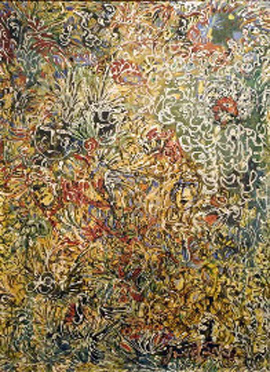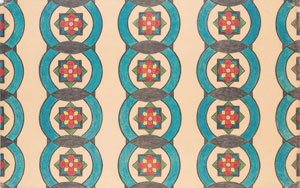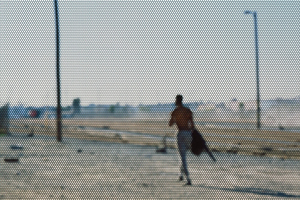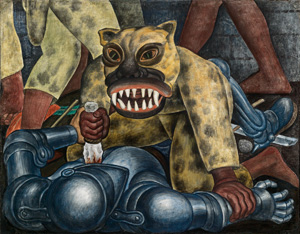11.29.24 — Two Piers for Art
Wrapping up from last time on the fall New York art fairs—call it my way of wrapping up the old year and the state of the art. And Art on Paper should be just the thing for buyers who cannot afford the Armory Show. So what if the work also looks cheap?
Starting well before Rembrandt, artists have always put their thoughts on paper for some of their most lasting and original work. Yet the stress here is on reproductions or close to it, and no one seems to have encountered, much less read, an artist’s book. 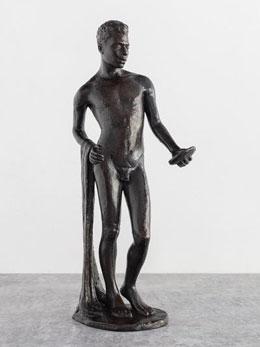 The fair has its share of commerce as well, like a display of luxury cars at back and stands touting “the art of wine.” Neither is made of paper.
The fair has its share of commerce as well, like a display of luxury cars at back and stands touting “the art of wine.” Neither is made of paper.
Nor are paintings by Elise Ferguson, in patterned curves that rather familiar themselves. Painting turns up as well in performance, by Fabien Dettori. Ching Ka Lin and Ching Ke Lin make sculpture from bamboo strips—a home on wheels and an orange helix. All four are among the fair’s special projects, once again a highlight. (Keep your eye out, because all but one fit neatly into booths rather than the aisles.) The pier off the Lower East Side could be worth the trip for its high ceilings and uncrowded display alone. Now what about works on paper?
Why, then, attend the fairs at all? The Independent comes to New York twice a year these days—once to a Cipriani restaurant and with not a trace of the passing scene. Is that classy or what? Fortunately, it also pays off with only twenty-eight exhibitors but nonstop rediscoveries of modern art. Sure, two booths fall back on Pablo Picasso and Gerhard Richter, the first with prints and the second with deservedly lesser-known series, but such is the price they pay for the expected. The fair does best, though, when it stretches the very meaning of Modernism and art’s history.
A young Stuart Davis (with Alexandre) does, immersed in the city’s dance halls, delis, protests, and burlesque, with all their uncanny darkness and light. He anticipates everything from Edward Hopper on his long walks to political art today. Janet Sobel does, too, as the very first drip painter, and critics, starting with Clement Greenberg himself, have rediscovered her so often that you might think there is nothing left to know. Hey, John Dewey, the philosopher, wrote her. Here, though, James Barron pairs her persistent realism with Sol LeWitt at his densest and loosest, and it works. I shall just have to take on faith that Hallwalls Contemporary Arts Center in Buffalo stretched the art scene as well, should anyone have seen it.
Naturally there are women, like Squeak Carnwath (with Jane Lombard) who makes cryptic but clearly feminist notations into large canvas or an entire wall. There are people of color like Simões de Assis (with Galatea) in Rio, who makes every family gathering a carnival. There are black women, too, like Lenore Tawney (with Alison Jacques), whose assemblage has its broken eggshells and other mysteries and whose cast unexpected color in their shadows. Ryan Lee pairs painting by Emma Amos with sculpture by Richmond Barthé, whom Isaac Julien has placed at the center of his video history of the Harlem Renaissance. His black nudes seem more artful and less quaint faced with her male mingling with an octopus. One need not know that Amos has traced her own history in art to Africa.
Will I regret skipping the Armory Show at the Javits Center? Of course, I would have enjoyed it and the outsize convention hall—more than any alternative. I brings out the best in countless exhibitors, old and new, by obliging them to think big, and it must itself have been thinking big itself on its thirtieth birthday. Still, hope that next year I really will do my job, by cutting back still further on the fairs. Now if only what has become a nonstop, year-round global event could cut back, too. Oh, and don’t trust anything over thirty.
Read more, now in a feature-length article on this site.
